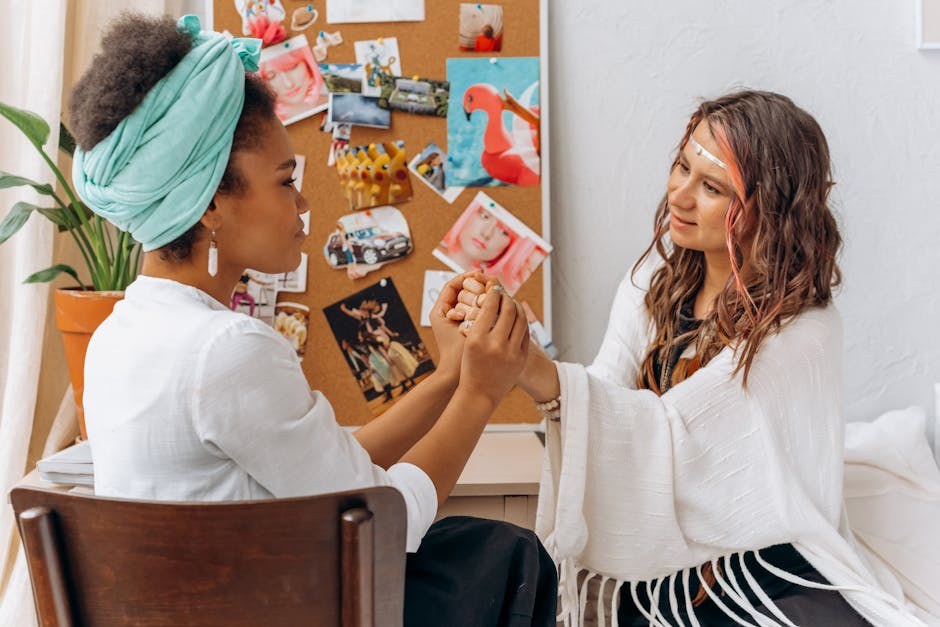Healthy love does more than keep two people close – it can genuinely expand who you are. When a couple chooses daily habits that elevate one another, they create a shared environment where strengths grow, wounds soften, and everyday life feels more manageable. The aim is not perfection or grand gestures; the aim is a steady rhythm of care that helps you both bring out the best. What follows is a reimagined guide to nurturing that kind of dynamic, with practical ways to build confidence, offer perspective, share skills, and find joy together.
What it means to grow together
To grow together is to treat the relationship as a supportive context – a place where each person’s individuality is respected while mutual goals take root. This mindset nudges both partners to act intentionally. You learn to notice what fuels your partner’s energy and what drains it, to name needs clearly, and to design routines that bring out the best. Growth is rarely dramatic; it is usually the accumulation of small choices that gradually reshape how you think, speak, and show up for each other.
Confidence that’s built, not borrowed
-
Affirmations that stick because they’re specific
Confidence deepens when encouragement is concrete. Rather than saying “You’re amazing,” point to something observable: “The way you handled that meeting showed real composure.” Specific praise teaches the brain what to repeat, and over time those messages bring out the best. Rotate your affirmations – competence, effort, creativity, kindness – so your partner hears a rounded picture of their value. Let small wins be visible and celebrated; doing so will steadily bring out the best in their self-belief.

Make room for receiving, too. When your partner compliments you, pause, breathe, and let it land. A shared practice of naming strengths creates a feedback loop that continues to bring out the best on both sides.
-
Encouragement paired with gentle challenge
Support without growth can feel stagnant, and challenge without care can feel harsh. The sweet spot – encouragement paired with gentle challenge – helps you bring out the best by respecting comfort zones while nudging progress. Ask questions that open doors: “What would make this task 10% easier?” or “What’s one small step you feel brave enough to take this week?” Keep the challenge collaborative, not competitive, so progress feels shared.
Emotional resilience you build together
-
Safety that lets old feelings move
Intimacy is a uniquely steady container for healing. When you listen without leaping to fix, you signal safety; when you reflect back what you heard, you signal care. Over time, that safety helps dormant feelings surface and soften, which can bring out the best in how each of you copes with stress. Use simple anchors: “I’m here,” “I can handle hearing this,” “Take your time.” The goal isn’t to function as therapists – it’s to be reliable witnesses who help one another bring out the best in emotional processing.

-
Rituals that regulate
Rituals cue the nervous system to settle: a nightly walk after dinner, a two-minute breathing pause before tough conversations, a weekend check-in over coffee. Choose routines that feel natural, not forced, and protect them as shared appointments. These rituals bring out the best by lowering baseline tension, which leaves both of you with more patience, curiosity, and empathy during conflict.
Physical closeness as everyday care
-
Affection that matches the moment
Physical intimacy spans an entire spectrum – a warm hug in the doorway, a hand on a tired shoulder, a slow kiss that says “I’m with you,” cuddling on the couch after a long day. When affection is attuned to the moment, it does more than soothe; it reaffirms the bond in a way that brings out the best in mood, energy, and trust. Ask what touch feels most comforting that week, and be open to how preferences shift.
-
Rest, recovery, and simple rhythms
Part of caring for a body is honoring its need to rest. Create a bedtime routine, protect sleep, take breaks during chores – these small choices bring out the best by preventing burnout before it starts. Shared movement helps, too: stretch together in the morning or take a short walk after lunch. The point isn’t intensity; it’s consistency that keeps you both resourced.

Learning as a love language
-
Teaching each other the worlds you know
Every partner arrives with pockets of expertise: one understands home repairs, the other curates films; one loves languages, the other cooks by intuition. Trade knowledge without condescension – curiosity first, instruction second. Co-learning brings out the best by expanding skills and giving you new ways to collaborate. Start small: share a recipe, swap book summaries, show how you organize files, explain a hobby. The goal is not mastery; it is the joy of learning from someone you love.
-
Making mistakes safe – and useful
Learning requires the freedom to get things wrong. Agree that the first attempt will be messy, and treat errors as data. When a recipe flops, laugh; when a DIY fix fails, assess together; when a budgeting plan needs revision, adjust. This stance brings out the best by turning trial and error into teamwork, where neither partner’s identity is threatened by a temporary outcome.
Perspective that widens your options
-
Second opinions that respect autonomy
Two minds can see around more corners than one. Use your partner as a sounding board, but keep decision ownership clear. “Can I run something by you?” invites feedback; “Tell me what to do” transfers responsibility you may want to retain. When feedback is offered as perspective – not pressure – it can bring out the best by clarifying priorities and revealing blind spots without eroding confidence.
-
Reframing with compassion
Sometimes the most loving thing you can offer is a new frame. When your partner doubts themselves, remind them of past resilience. When a setback feels defining, name it as temporary. Reframing is not denial – it is choosing a lens that brings out the best in problem-solving. Use phrases like, “Another way to see this is…,” or “If we zoom out, what matters most?” These gentle pivots can shift the whole day.
Community that multiplies your joy
-
Inviting each other’s people into your shared life
Partnership often means blending circles – friends, colleagues, family. Introduce intentionally: small gatherings, shared activities, low-pressure dinners. When you curate your social time with care, you bring out the best by surrounding the relationship with supportive voices. Notice who leaves you both energized, and invest there. Notice who leaves you depleted, and establish boundaries together.
-
Creating new traditions with your combined crew
Start a monthly game night, a yearly picnic, a movie club – tiny traditions add texture to your social world. These rituals make connection repeatable, which in turn brings out the best in your sense of belonging. Let each person contribute: one hosts, another crafts the playlist, someone else handles snacks. Co-creation strengthens bonds without making any one person carry the weight.
Practical help that lightens the load
-
Trading skills and sharing tasks
Households run on dozens of invisible actions – cooking, tidying, repairs, scheduling, budgeting. Map out what each of you enjoys or tolerates, then trade accordingly. If you love to organize and your partner loves to troubleshoot tech, let those preferences lead. This practical cooperation brings out the best by freeing up energy for what matters most. Revisit the division of labor as seasons change so the arrangement stays fair.
-
Designing systems that are easy to use
Systems that are too complex fail under pressure. Choose simple: a shared calendar, a visible to-do list, a weekly reset where you tidy together for 20 minutes. When the logistics are friendly, you both follow through, and that reliability brings out the best in the home atmosphere. Add a fun element – music while folding laundry, a cup of tea during bills – to turn chores into moments of connection.
Support that shows up when life swerves
-
Being the steady one in a storm
Stressful seasons are inevitable: job shifts, family concerns, health scares, financial strain. Decide ahead of time how you will respond – who calls whom, what expenses pause, which commitments you can cancel. Shared planning brings out the best by replacing panic with clarity. During the storm, return to basics: food, rest, honest check-ins, and practical steps. Even a single steady ritual can anchor the day.
-
Listening that lightens, not loads
When your partner is hurting, ask what kind of support they want: advice, empathy, distraction, or silence. If they choose empathy, reflect feelings; if they choose advice, propose options; if they choose distraction, offer a simple outing. Matching support to the moment brings out the best in recovery because it honors agency as well as emotion.
Joy as a renewable resource
-
Play, inside jokes, and shared delight
Laughter bonds people quickly because delight is contagious. Protect a little time for silliness – a meme exchange, a dance in the kitchen, a ridiculous voice for the dog. Inside jokes are the breadcrumbs of intimacy; they remind you of your unique language. This playfulness brings out the best by cutting through tension and refilling the tank of goodwill that relationships run on.
-
Celebrations that fit your style
Not every celebration needs streamers. Some couples love parties; others prefer quiet rituals. Mark milestones in a way that feels genuine: a handwritten note, a favorite meal, a walk to the lookout point where you first talked for hours. When you tailor celebration to your shared personality, you bring out the best in gratitude – the kind that keeps momentum alive.
Communication habits that keep everything humming
Even strong intentions stumble without clear communication. Try a weekly mini-meeting: What went well? What felt heavy? What’s coming up? Keep it short, kind, and actionable. Replace mind-reading with questions, defensiveness with curiosity, and certainty with openness. These micro-skills bring out the best because they transform misunderstandings into opportunities for alignment.
Boundaries as an act of care
Boundaries are not barriers; they’re the structures that protect energy, time, and values. Agree on quiet hours, alone time, money limits, and digital etiquette. When both partners know where the edges are, it’s easier to play freely inside them. This clarity brings out the best by minimizing friction and maximizing freedom.
Choice, consent, and ongoing check-ins
Desire ebbs and flows. So does capacity for deep conversation, travel, or social time. Normalize asking for consent – in touch, in plans, in emotional bandwidth. A simple “Do you have space for this?” or “Would you like a hug?” honors autonomy and helps you bring out the best in connection without overwhelm.
Repair as a daily practice
No couple avoids conflict; what matters is how you repair. Start by naming the rupture: “I interrupted you, and that felt dismissive.” Offer accountability without excuses. Then propose a next step: “Can we try again after dinner?” Swift, sincere repair brings out the best by teaching both partners that mess-ups are survivable and growth is expected.
Designing a life that reflects your values
Finally, zoom out. What kind of life do you want to co-author? Choose values you can operationalize – generosity, adventure, steadiness, learning – and translate them into weekly behaviors. If you value learning, schedule a shared class; if you value steadiness, create buffers in your calendar; if you value generosity, plan a recurring act of service. Aligning action with values will reliably bring out the best because it reduces the gap between what matters and what you do.
A different kind of prescription
It’s a wonder that more doctors don’t write prescriptions like “Hold hands daily” or “Trade one compliment each night.” While there’s no universal dosage for love, the principle is simple: repeat the behaviors that bring out the best and phase out the ones that do not. With a little creativity and a lot of gentleness, two people can become a context in which each thrives – not by accident, but by design.